[0.3] You can have the entire Star Wars galaxy on your phone…like music. I don't want to lug my record collection with me everywhere, but I have it on my phone…[where] I enjoy it even more because I have better access to it. There are so many other things that we can do digitally that we can't do with physical cards. There's endless possibility.
—Steve Ciccarelli, original producer of Star Wars Card Trader (quoted in Ratcliffe 2015)
1. Introduction
[1.1] Digital media in the 21st century has increasingly become an alternative means for the distribution of experiential goods. Digital music, video, and text files are now commonly sold through mainstream retailers for use on a variety of devices. However, this transition changes the circumstances of our relationship to the goods (increased portability, decreased transferability, decreased production costs, etc.). Several collectible goods have also begun to make the transition. Comic books, for example, have developed a thriving digital market. Notably, however, digitizing comics has come at the expense of much of their collectability, as the ability to display and exchange books has been coded out of their digital versions (Steirer 2014). Digital versions of Collectible Card Games (CCGs) have also developed, as apps such as Hearthstone and Earthcore: Shattered Elements are now available for Apple and Android devices. In these cases too, however, collectability is virtually eliminated; there are no built-in trading functions in either of these games, and thus traditional collectability—based in display, transfer, and secondary-market profit—is coded out.
[1.2] In immaterial culture, with the presumption of unlimited reproducibility and the practice of licensing restrictions (selling access rather than ownership), collectability has been a difficult feature to retain. Often digital media reference the collecting ethos as a form of play, not ownership; in the Pokémon model, collecting is slang for completion and thus competitive behavior, not a means of financial valuation and exchange (Geraghty 2015). Occasionally such completionist collecting is even monetized in computer gaming, as downloadable content (DLC) is offered for those players dedicated enough to desire an enlarged or personalized experience. Paid DLC can even become a display artifact; games like Neverwinter and Star Trek Online have integrated models for clothing one's avatar in paid DLC. This digital display, however, is restricted. There is no direct corollary to the complex display behaviors of collectors of physical objects (Hoebink, Reijnders, and Waysdorf, 2014). The DLC collection's size and breadth remain a private affair. Collectible editions of media are thus still predominantly physical: physical packages laden with feelies, like the Batman: Arkham Asylum—Collector's Edition which was packaged with a life-sized Batarang, among other artifacts (Peters 2014).
[1.3] In recent years, trading cards have begun to make the leap into the digital realm in apps oriented specifically around collecting and exchange. Sports cards were the first to make the transition, as Topps (the largest maker of sports trading cards) has created digital app versions of their baseball (Bunt), football (Huddle), and Soccer (Kick) cards, all of which included both a trading function (and thus a secondary market) and a digital re-creation of scarcity through limited card production. However, it is clear that Topps has been hesitant about the replicability of collecting culture digitally; each app has a prominent game component that echoes fantasy sports.
[1.4] In 2015, however, the Star Wars Card Trader app became Topps's first app to be oriented exclusively around collecting and trading, with no game-play element beyond the completion of sets. This extension of film tie-in card collecting not only helps us to envision how physical collecting practices can be rendered digitally but also clarifies some of the ways in which the digital experience changes those practices. Star Wars Card Trader is physical collecting amplified by both speed and intensity. A less marketing oriented take on Ciccarelli's quote above would claim that the "endless possibilities" of the new field of digital card collecting translate to an endless claim on the user's attention. With onetime releases of limited count cards (marked sold out as soon as the limit is reached), global demand, and award cards provided free for completion of sets by a particular date, interest in individual cards can spiral wildly out of control and then collapse in a matter of days, if not hours. For many cards in the app, their peak trade or resale value occurs within the first hour of release. Trading can thus become an intense, frequent, and time-consuming experience, as players are continually chasing and/or disposing of the newest available cards.
[1.5] In this article, I wish to focus my attention on an outgrowth of this pacing and intensity: hoarding, which appears to have been spontaneously generated as both a cry of individualism and a coping mechanism. Hoarding, in Star Wars Card Trader (2015), is not the collecting of all available cards or upgrades. Nor is it directly related to the pathological disorder in which a person accumulates and becomes attached to vast quantities of objects. Hoarding, in this case, is the intentional acquisition of fantastic quantities of a single, valueless card. Mass hoarding is an inversion of the encouraged behavior both in the app and in other games with collecting elements, where the player is encouraged to chase either the rarest collectibles or a complete set of all available items. Star Wars Card Trader, like its sports-card brethren, drives attention toward new and low-count cards through timed award releases, thus steering attention away from the basic white cards which are unlimited and can reach counts well over 3 million copies. Although Topps has monetized and incentivized hoarding, increasing the practice by integrating rewards for sizable hoards, the original practice continues in the form that I term mass hoarding: the collecting of quantities far in excess of what may be rewarded and thus entirely driven by the player's whims.
[1.6] User conversation in Star Wars Card Trader–related forums—including, predominantly, a Reddit subgroup and the Facebook community Black Sun Card Cantina—renders the behavior and reasoning of mass hoarders clearly visible. Card hoarding is both a shadow culture and a coping mechanism for digital collecting. As the concepts of profit, haggling, artificial scarcity, and even anonymity wear thin, Star Wars Card Trader players create an artificial zone of profit-blind and personal behavior within the app. The behavior is a blur between punk fashion and commune. Like punks, mass hoarders implicitly critique capitalist values by inventing a playstyle that elevates self-expression, personal goals, and nontraditional desires. But this practice is communally rather than rebelliously focused: they create a mutually supportive subculture in which the profit motive is derailed in favor of a rigorous sense of fairness. Through this combination, the fans turn an app designed to stress profit and acquisition and to minimize personality into a space where both clear identities and fair play can rule. They create pockets of humanity and humane behavior in a digital world where those sentiments were (perhaps intentionally) omitted.
2. A game of stress
[2.1] Star Wars Card Trader launched in early March 2015. It is a combination of game (it has a score and awards for completing goals), social platform (it has fan forums and avatars, and players can peruse the holdings of other players), and card collecting. The app is available for both Apple and Android operating systems and is available for download in several countries. At the time of writing, there are more than 80,000 active accounts in the system (note 1). Many players, however, play with multiple accounts, despite the fact that this is against the rules of the game. As such, there are likely significantly fewer than 80,000 players globally.
[2.2] The program provides the user with 25,000 credits on each day in which they sign in, with a bonus awarded for logging in on 7 consecutive days. Players can add to their available credits either via interacting with advertising or paying into the system with a credit card. The user can spend these credits at any time to open packs, which cost between 1,000 and 900,000 credits each. The system then sorts and tracks the cards acquired by the user. The digital cards mimic physical cards in that they are predominantly rectangular, have a front and back, and emerge from a digitally animated wrapper.
[2.3] As in collecting of physical objects, the cards within the app separate into two clear categories: base cards (unlimited cards that make up the basic set) and inserts (available for a limited time and in limited quantities). The base cards are separated into five rarity levels: in 2015, white, blue, red, yellow, and gold. The 2015 series was retired in January 2016 with just under 4 million copies of any given white available and roughly 20,000 of any gold, with the other colors residing somewhere in between (figure 1). The inserts can have color variations as well and range from under 100 to well over 50,000 copies. Sometimes packs contain a guaranteed insert; other inserts have odds as rare as one in 1 million packs (figure 2).
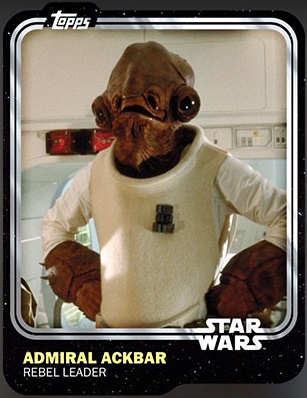
Figure 1. The 2015 White Admiral Ackbar.
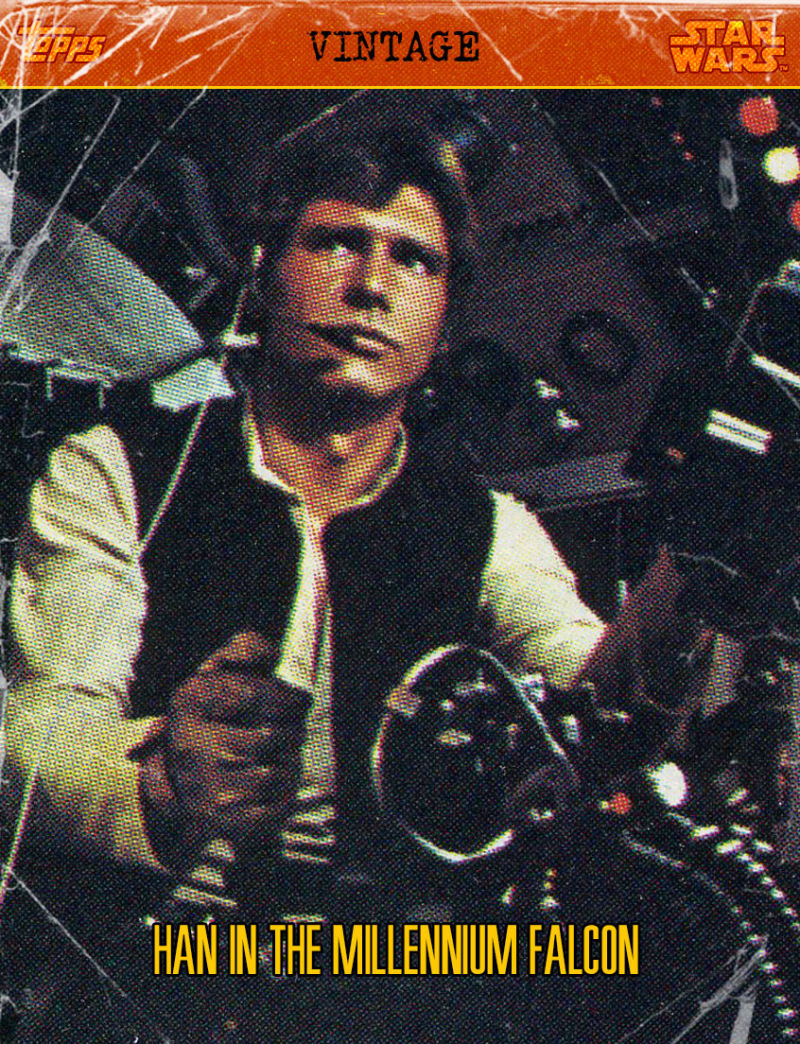
Figure 2. The most universally desired insert card from the first 30 weeks of the app, "Han in the Millennium Falcon" from the Vintage series, colloquially known as Vintage Han. [View larger image.]
[2.4] The game has a score, but it fluctuates to accommodate new card releases and is hazily understood by the average player. Scores are hierarchical; the best account has a score of 100, with everyone else beneath that score. In my time spent playing, three different players have held the peak score: MJFHMATT, who left the game in October 2015 (https://www.reddit.com/r/starwarstrader/comments/3pui62/a_hero_has_left/); GEBEAU31, who purchased MJFHMATT's account and transferred most of its contents (note 2); and PARMTHEPOM, who emerged as an extraordinarily heavy spender in late 2015 and took over the top score on December 29 (https://www.reddit.com/r/starwarstrader/comments/3yobbm/a_new_100/). Thus, unless a player is willing to spend many thousands of dollars on the app, the top position is unattainable.
[2.5] As such, the only truly attainable goals for the bulk of players reside in collecting. Sets can be completed either through repeated pack purchases, by trading with other players, or through resellers online—typically on eBay. Attempts have been made by Topps to intensify the interest in completing sets, especially new releases, by offering an award card for the completion of each set. Thus, much of the actual game centers on completing numerous small goals and adding to one's list of awards. Unlike physical card collecting, this results in a perpetual upgrade model, in which the perceived value of cards decreases drastically with age. (In the community, cards with awards yet to come are termed live, while cards with an expired award deadline are dead.) Thus, the desirability structure of digital cards is predominantly inverse to that of physical cards: the newest cards are the most heavily in demand, and only the most aesthetically pleasing or historically important of the dead cards maintain any value. (For an example of the dollar values of these digital cards, see Lussier 2015.) The game element is therefore to be found in the award chase, while subcultures of taste and less demanding collecting orbit around the current chases.
[2.6] Card chases are intense, can require a massive expenditure of credits, and can cause a player to obsessively check the app for new releases. Regardless of the pack odds, most inserts are available in packs for a day or less. Some particularly desired cards sell out in less than an hour—for example, the September and October release "The Force Awakens: Topps Classic," in which each card sold out in roughly 45 minutes (figure 3). If a player misses a card that sells out, the player's only recourse is trade or resellers.
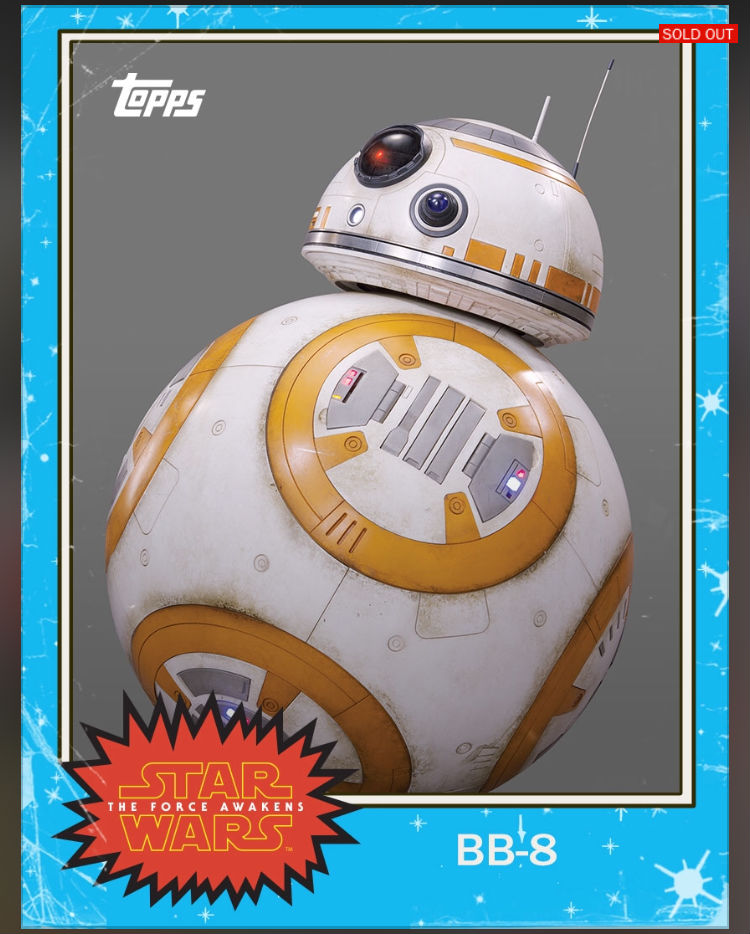
Figure 3. BB-8 from the "The Force Awakens: Topps Classic" series. [View larger image.]
[2.7] Also, as with many freemium games that are built on microtransactions, Star Wars Card Trader has a class system (Seufert 2014, 156–57). Many users use the system solely as a free-to-play application; they spend no real-world currency on the game, playing only with credits earned within the game. These players form the vast underclass of the system and are typically incapable of chasing the more desirable insert cards because of a lack of funds (https://www.reddit.com/r/starwarstrader/comments/36i3iv/insert_set_tiers/). Many users regularly pay-to-play; some pay into the system on a daily basis (https://www.reddit.com/r/starwarstrader/comments/3p5k23/the_death_of_the_f2p_user/cw3cj9a). At the very top are the extremely heavy users—some of whom may pay upwards of $100 or more per day—who are colloquially referred to within the community as whales. (User PARMTHEPOM appears to have paid approximately $15,000 into the system on the night of November 2, 2015 [https://www.reddit.com/r/starwarstrader/comments/3rbnrj/somebody_just_went_a_bough_the_rest_of_the_neons/].) Whether the whales play for business or pleasure, their scores are the highest, their holdings the most consequential, and their value to Topps enormous. Although class status can put limits on what and how much a user can collect, it has no inherent correlation to the player's frequency of use. The 7-day credit incentive keeps users regular.
[2.8] From the outside, Star Wars Card Trader doesn't look much different from any other fan culture. Twitter accounts, Facebook accounts, a Reddit subheading, multiple Web sites, and two podcasts (The Trade Federation and the Card Trader Illuminerdy) disseminate news and provide a place to discuss the app and negotiate trades (figure 4). Fan-art and remix culture is also common, including images of both official characters and cosplay performers (figures 5 and 6).
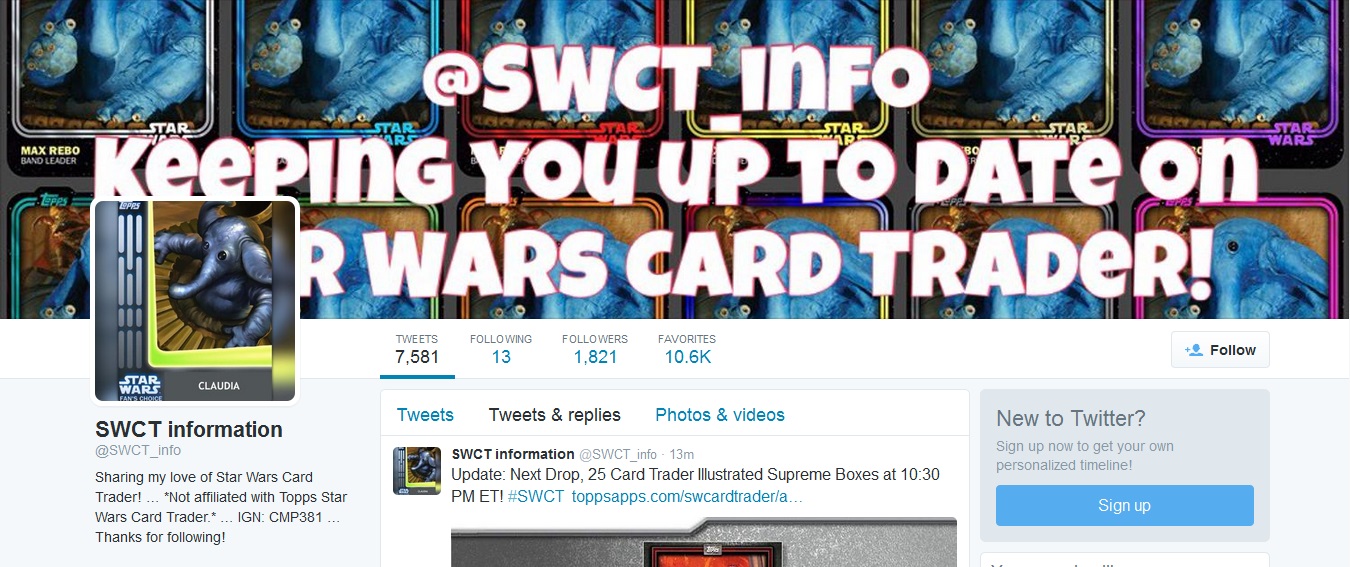
Figure 4. The header for the Twitter account @SWCT_info, operated by Claudia, aka CMP381. [View larger image.]
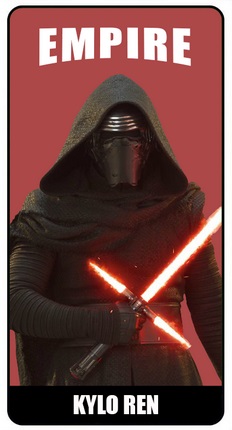
Figure 5. Twitter user @Vashon42's custom Kylo Ren card, modeled on the 1965 Topps football card design.

Figure 6. A custom cosplay card of Leeanna Vamp from the Web site XplosionsOfAwesome. [View larger image.]
[2.9] It is the intensity of card chases that gives this online community its most recognizable features. The pace of online activity is not only rapid, especially in the wake of each newly released card, but also includes frequent discussions of the stress caused by collecting. The pace of play demands near constant attention from either inside or outside of the app. Players dedicate huge quantities of time to the chase (https://www.reddit.com/r/starwarstrader/comments/425x2x/and_im_out/). It is not uncommon to see players fret about cards being released while they are unavoidably engaged at work (https://www.reddit.com/r/starwarstrader/comments/3ty6yk/am_i_the_only_one/). As the app becomes like a second life, it also prompts digital solutions to the sense of captivity that it creates.
3. Sameness in a storm of difference
[3.1] Hoarding multiple copies of a single collectible is a much simpler proposition in the realm of digital culture than it is in the physical world. The reach of a physical collector is limited, and the desire to accumulate vast quantities of the same object is rare. Collecting within an app, however, includes a built-in global network of trade partners. Add to this global network the fact that white cards are the waste product of the system (unlimited filler material, distributed like packing foam around the better cards), and the pool of common cards available to a given player explodes in number. Acquiring massive quantities of digital goods, provided the system allows for duplication, is exponentially easier. Mass hoarders expect to acquire not merely dozens or even hundreds of a card; they collect thousands of copies, often in a very short space of time. Hundreds can be acquired in an hour-long binge.
[3.2] Although many mass hoarders also collect the rainbow (that is, all available color variations of their hoard card), the focus of mass hoarding is typically the white base card. The selection of which card(s) to hoard can be personal (I chose to hoard "Luke Skywalker: Jedi Knight" because of a childhood love for that costume and character), seemingly random (Claudia of @SWCT_info selected Max Rebo because he "was the most colorful card in Series 1" and thus "the easiest for my eye to find" [October 6, 2015, 10:18 AM; October 23, 2015, 9:04 AM]), or motivated by convenience (the fewer people competing for a hoard card, the more likely it is to find them available). Some players expand their hoarding to include multiple different white cards.
[3.3] The largest mass hoard I have encountered—and I believe the largest hoard in the app—is that of user RICHKULACH, who holds over 85,000 copies of the 2015 white Bossk. Another prominent hoard is held by Claudia of @SWCT_info, who owns more than 22,000 copies of the 2015 white Max Rebo. Though there is no known list of particularly successful mass hoarders, my personal research list places Claudia eighth in terms of bulk. Although I have examined the accounts of many active hoarders, 10,000 copies and above remains a rare achievement.
[3.4] Mass hoarding is also in process of being overshadowed by Topps's monetized variant. Since the middle of 2015, Topps has been releasing Monument cards as hoard awards—a player can acquire a Monument in exchange for 5,500 copies of the white card being honored. If insert chasing is the mainstream and hoarding the subculture, the Monument card is the point at which they intersect. The Monument incentivized hoarding and also gave it a logical endpoint (those concerned only with awards could stop at 5,500). Between January 10 and 14, 2016, Topps released a Monument variant for every remaining 2015 white card, confirming that there was no longer any base card that could be hoarded unprofitably. At this point, hoarding became simply another chase. Before this point, and for the remaining subculture of mass hoarders, the hoard was the noise in the system: offbeat, pleasant, and implicitly critical.
[3.5] Those who persist in mass hoarding invert the norms of behavior, focusing on quantity over quality and on haggle-free trades. They also engage in public celebrations of numerical milestones. If the culture of cutthroat acquisition and completionism is the typical doxa of Star Wars Card Trader, then hoarding is an explicit rejection of that doxa (Bourdieu 1984, 170, 471). It is thus to a great degree the nearest that a collector can get to what Dick Hebdige (1987, 80) terms a "symbolic form of resistance"—in this case, a resistance to the profit ethos that drives insert chasing. Many players describe trading as a scenario with a winner and a loser (https://www.reddit.com/r/starwarstrader/comments/44jey7/i_think_i_won_this/). Hoard trading denies either party a financial victory.
[3.6] However, mass hoarding is still based in consumption, and hoarders do not actively seek to overturn or rebel against the game's built-in power structure (Hebdige 1987, 148n6; Smith 2012, 35). Indeed, mass hoarding is usually a sideline for a player who is also engaging in mainstream collecting. Mass hoarding is less an act of rebellion than of frustration—a self-made chase with no reward, designed to pleasurably fill a player's down time. It is, to a great degree, the equivalent of role-playing in a massively multiplayer online role-playing game (MMORPG). As with role-playing, "it offers no tangible rewards" and may even slow down the player's progress by consuming time that could be more profitably spent elsewhere (MacCallum-Stewart and Parsler 2008, 227).
[3.7] Unlike the visual possession of insert chasing (acquiring a new card adds its image to your My Cards list), hoarding relies upon a mathematical fantasy of possession. There is no way within the app to actually look at, for example, 512 copies of the white Admiral Ackbar card. A player cannot click a button and witness the majesty of scrolling for 5 minutes through their hoard. Players cannot even personalize the organization of their own collection in order to foreground the hoard; cards are always sorted via one of a few presets, determined by the viewer, not the owner, of the cards. A viewer can, if they choose, sort by quantity, thereby placing any hoard at the top of the list; this, however, is at the viewer's discretion. Unless one is actually trading the cards, then, the only thing that differentiates a single card from a vast hoard is a small number added like a flag in the upper right-hand corner (figure 7). Effectively, hoarding is a number fetish. Although the act of hoarding undoubtedly connects to imagination of physical plenty, the reality is that a hoard is simply an ever-increasing number on a screen. Its nearest parallel may, in fact, be a bank balance—a simple numerical accounting of the number of pennies at one's disposal. It is both a collection and a measurement of time spent.
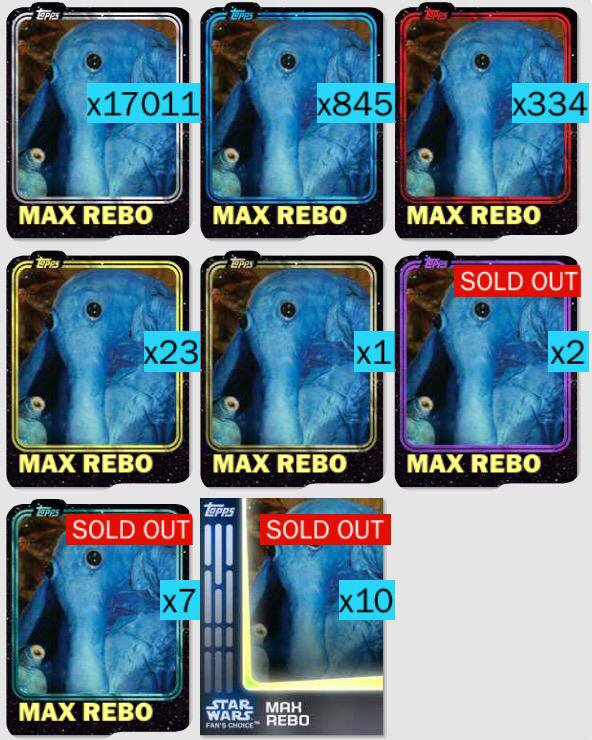
Figure 7. Claudia's Max Rebo hoard, as posted to @SWCT_info on 4 Aug 2015. Are there 8 cards here, or 18,233? [View larger image.]
[3.8] Even for players of the game, the pleasures of hoarding can be difficult to understand. At times nonhoarders react with befuddlement. Take, for example, the VintageHan.com user Hofy, who asked, in early August 2015, "What is the deal with some people hoarding hundreds or thousands of a particular common card? So what if you have 897 Jar Jar white boarder [sic]. This just baffles me" (http://vintagehan.com/forum/index.php?/topic/3704-why-hoard/?hl=hoarding). This likely relates to the tradition, especially prevalent in physical card collecting, of seeing one's collection as not only a pleasure in itself but also an investment for the future (Baker and Gentry 1996, 135). The rarity structure of Star Wars Card Trader encourages the player to define white cards as valueless and thus meaningless. With no clear card value, mass hoarding seems like a profitless expenditure of time. For such players, the only reason for hoarding is the occasional chase for Monument cards.
[3.9] Despite the existence of Monument cards, mass hoarding is generally seen as an end in itself. As mentioned by Claudia via @SWCT_info, hoarding is a fun way "to pass the time in app" (October 2, 2015, 6:55 PM). For some (increasingly in the minority), that is all it has ever been. VintageHan user EthanFriend03 responded to Hofy, in the query above, by simply saying: "Most people just think it is a fun side quest." The chances of a Monument card honoring a particular hoard were, initially, considered too remote to be worth the effort. Indeed, Reddit.com user 30newme revealed that he or she "decided to hoard Mas Amedda, even though I knew that the odds of getting a Monument award…were slim to none" (https://www.reddit.com/r/starwarstrader/comments/3fh5q1/one_month_of_hoarding_madness_how_did_you_do/). In general, then, mass hoarders ignored the concept of the Monument, choosing to receive news of a Monument as a pleasant surprise, not as the goal of the enterprise.
4. Various meanings of vastness
[4.1] Despite the frequency of mass hoarding, the app's users spend little time rationalizing the behavior. In a Reddit thread called "Who and Why Do You Hoard?" all but three of the ninety replies were about the appeal of the character on the card, not the appeal of the activity itself (https://www.reddit.com/r/starwarstrader/comments/3pwgbe/who_and_why_do_you_hoard/). But hoarding was a widespread phenomenon even prior to its monetization, and, as the examples above attest, it expands well beyond the territory of favorite characters. If, as Daniel A. Nathan asserts, "a collection always reflects its owner's values and tastes" (2012, 557), what are the values and tastes reflected in a hoard conceived simply to have a hoard?
[4.2] The most basic explanation is that mass hoarding is an escape from the stress of typical app pursuits. It includes rudimentary interactions with others—generally amounting to nothing more than an acceptance of a trade offer and an occasional "thank you" comment—without any of the tension involved in trying to strike the best deal for a card. VintageHan user JEDIMASTERBEYP asserts that "hoarding…gives me a break from chasing inserts." Fellow user LEFEYETTE adds that hoarding "virtually guarantees you fair trades as well" (http://vintagehan.com/forum/index.php?/topic/3704-why-hoard/?hl=hoarding). Reddit user renmotigo put it bluntly when he or she simply said, "I do it [hoard] because it allows me to actually trade, as opposed to getting frustrated that I can't find anyone to trade other cards with" (https://www.reddit.com/r/starwarstrader/comments/36c2rc/just_want_to_ask_everybody_for_their_thoughts_on/crddmlq). These comments confirm that, for many players, mass hoarding is seen as a way to either evade, protest, or repair the unpleasantly rigorous negotiations of trading cards with clear value.
[4.3] Typical trading within the app operates much like William D. McIntosh and Brandon Schmeichel's description of physical collecting: it creates and releases "manageable tension," but can create depression and anxiety when it becomes too materialistic (2004, 88). With a standard practice of one-for-one, same-color trading, hoarding is a no pressure zone where a player can engage in hardcore play without investing a great deal of emotion or effort. Mass hoarding and hoard trades are tension management for an app that is a nearly permanent zone of stress. It can, in fact, threaten to become a habit-forming behavior; some mass hoarders discuss their hoarding as binge behavior equivalent to heavy drug use (figure 8). In short, it would seem that mass hoarding is an attempt to seek respite, without leaving the app, from the more difficult, profit-seeking negotiations that occur in the bulk of trades—a way to play without consequences.
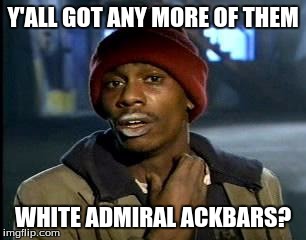
Figure 8. Reddit user jdinger29's joke meme "How I feel after chasing my hoard card all day."
[4.4] One explanation for mass hoarding, then, is that it represents a profit-blind approach to a hobby app that is predominantly profit-oriented in its inflection. Historically, the profit motive has often been seen as an imposition on the personal pleasures of collecting (Cook 2001; Baker and Gentry 1996, 135). Although this may not be literally true (Gregory Steirer [2014] makes a compelling case for profit motivation being inherent in ownership-based consumption), some Star Wars Card Trader hoarders engage in mass hoarding specifically to create an innocent space within the app where they can divorce their thoughts from dollar value and think only of personal value. This is an explanation centered in utopian longing. If trading is too frustrating in the era of insert cards and planned scarcity, hoarding is its idealized corollary—freedom from frustration through a return to a space of abundance (Dyer 1985, 228).
[4.5] However, evading haggling is only one aspect of mass hoarding. Through hoarding, the players also turn a largely anonymous venue into a means of self-definition—what Russell W. Belk (1988) terms the collector's creation of an extended self. Socialization is limited in Star Wars Card Trader. One is allowed only a name and a small photo as an avatar, and communication between accounts is difficult (private messages can only be sent alongside a trade offer). As such, in the absence of a hoard, there is little that individuates a collection or provides a player with a recognizable persona. Hoarding, however, provides a unique and recognizable identity both to the player and to the collection. It is, in a way, a digital re-creation of the "external props" that Mihaly Csikszentmihalyi says are required to keep our mental sense of identity in "focus" (1993, 22). The hoard becomes the account's face—its de facto avatar—created by the human acquisition of digital things. Indeed, players frequently use a picture of their hoard card as their avatar photo, collapsing the distinction between avatar and hoard completely.
[4.6] Some players enter the digital space with an identity in mind. User CHEWBACCA123456, for example, hoards Chewbacca cards. VintageHan user Obi-John sees his hoard as a digital extension of his real-world Obi-Wan Kenobi memorabilia (http://vintagehan.com/forum/index.php?/topic/3704-why-hoard/?hl=hoarding). In both cases, we can see the preexisting fandom in the account name. In this approach, a mass hoard becomes an extension of broader fan behavior. This act of self-definition often dovetails with childhood proclivities. Out of 20 comments in the Reddit.com thread "A Message for New Hoarders," four specifically mention that they loved the character as a child, and two more mention collecting a character for reasons of attachment not specifically connected to childhood (https://www.reddit.com/r/starwarstrader/comments/3g8ojq/a_message_for_new_hoarders/). When hoarding for fun, attachment to the character pictured is often placed above expectation of a reward for the behavior. This aspect reveals hoarding to be an extension of another kind of profit-blind collecting into the digital realm: the elevation of card content over card rarity or dollar value. Here, mass hoarding links to the eccentricity of collecting—an atypical fixation, often originating in childhood, on a particular character (Smith 2012, 34–36).
[4.7] Even when players do not enter with an avatar persona in mind, they can discover a persona through their hoard. Here, the eccentricity can be intentionally cultivated as an app-specific persona. Claudia claims to have selected Max Rebo solely because his card was colorful and therefore noticeable. However, her @SWCT_info Twitter account background is now covered with images of various Max Rebo cards, and her Twitter avatar is a piece of fan art of Max Rebo with Claudia as the name (visible at lower left in figure 4). She is as recognizable as "the Max Rebo hoarder" as she is as "Claudia." In this way, mass hoarding (always an act of self-expression) becomes an element of self-creation. Constructing a self through hoarding means that the game can take on a narrative component, as the player's behavior becomes its own type of story (Meadows 2008, 23). A player's quest for larger and larger totals can take on the status of spectator sport, as is the case with Claudia's Max Rebo collection and RICHKULACH's Bossk hoard. Claudia's audience receives semiregular updates on her hoard counts. RICHKULACH has become the stuff of legend, arising randomly in conversations about hoarding in fan forums (https://www.reddit.com/r/starwarstrader/comments/37fab2/i_dont_always_trade_bossk_meme/)
[4.8] Mass hoarding is thus also the creation of alternative cultural capital. In the absence of the traditional sense of cultural power and status afforded by the grandiose, the rare, and the expensive (Csikszentmihalyi 1993, 24)—in this case, high-end digital cards—a mass hoard is the creation of a popular cultural shadow-capital. Indeed, the following description of fan cultures by John Fiske could be a description of mass hoarding behavior: "Popular culture capital, unlike official cultural capital, is not typically convertible into economic capital…Acquiring it will not enhance one's career, nor will it produce upward class mobility as its investment payoffs. Its dividends lie in the pleasures and esteem of one's peers in a community of taste rather than those of one's social better" (1992, 33–34) (note 3).
[4.9] In short, a mass hoarder may engage in hoarding not simply to avoid endless haggling over highly valuable cards, but also because they cannot attain those cards in the first place. As such, one could attain a sense of cultural power and importance by being one of the game's greatest hoarders, despite having no other hope of ascending into the upper echelon of players. A mass hoard overwhelms a lack of quality with quantity.
[4.10] This explanation is given added validity by the fact that hoarders often have a routinized "possession ritual" (McIntosh and Schmeichel 2004, 94). After attaining a round number, mass hoarders will often circulate celebratory messages with an image of their hoard count. Such celebrations are unavoidable on the Star Wars Card Trader subReddit on Sundays, as that day has become, by consensus, the day when players discuss their hoard progress. These celebrations, however, occur in all online venues, including Twitter and Facebook, and become a space for congratulation and even minor remarks of jealousy. The veneration of an escalating number becomes the mark of the collection's value to the group.
[4.11] This act of personal differentiation can, however, also create a microculture. Mark Stephen Meadows has noted that similar avatars tend to cluster into groups. See, for example, his discussion of America Online, in 1993, when his impulsively chosen screen name PigHed quickly resulted in a friend group of pig-themed avatars (2008, 9–11). Star Wars fandom, with a finite number of recognizable character names to choose from and thus a finite number of characters to hoard, is ripe for such clustering. For example, Reddit user LeviTriumphant makes an effort to connect with other hoarders of "Space Slug" by adding them to his friend list and sending them congratulatory messages when they reach milestone numbers (https://www.reddit.com/r/starwarstrader/comments/3py8wg/honest_question_when_you_see_someone_in_the_feed/). Unlike mass hoarding in general, which is traditionally nonrivalrous and friendly—presuming that any trade partner will have a different hoard—these microcultures can create friend groups that return to the competitive behavior of mainstream collecting. For example, each "Jedi Luke" collector may attempt to acquire a larger hoard than the others have (http://vintagehan.com/forum/index.php?/topic/3021-tracking-the-top-20-hoarders/?hl=hoarding#entry22185).
[4.12] Even this friendly rivalry is, however, value-blind—or, at the very least, measures value in terms of effort rather than dollars. Unlike the collecting of insert cards, which is a practice where pay-to-win issues can creep in (players who pay for additional credits have more chances to acquire rare cards), hoarding is almost exclusively effort based. As Reddit.com user modok_baby said: "Having a vast supply of dupes to trade can only help you as fast as you can trade them, which can be quite tedious, so I think the…deciding factor won't be how many white dupes you start with, but dedication over time" (https://www.reddit.com/r/starwarstrader/comments/3bzbsf/hoarding_white_cards_get_them_here/csr2n0p). A hoard is never built solely through purchasing packs. A hoard is created through trading, which requires time and effort. As such, competitive hoarding is an alternative microcultural competition that is, at least ostensibly, entirely merit based. The biggest hoard will likely be owned by the player who put in the most effort. (for example, figure 8 is simultaneously a self-deprecating joke and a prideful indication of the player's dedication to his hoard.) The mass hoard is a performance—a direct numerical measurement of the player's dedication to the game.
5. A gathering of gatherers
[5.1] Mass hoarding thus reveals several significant behavioral traits of this particular digital fan culture. Firstly, it is apparent that the acceleration of the pace of release in a constantly updated app, especially when that app is itself commodity oriented, produces an equal and opposite obsession with the mundane. In the mutually defining sphere of valuable and valueless objects, both sides of the equation become objects of fascination.
[5.2] This obsession with the mundane psychologically links to a network of preexisting concepts that are often considered the opposite of profit-oriented behavior: innocence, childhood affections, and identity formation. Though identity is formed in reference to what one chooses to consume (which character to hoard), it is the ultimate uselessness of the object that is stressed by the mass hoard. Much like the punk rock adoption of taboo clothing, grime, and a lack of both mainstream taste and talent, hoarders clothe themselves in the castoffs of a profit-oriented culture. Although the political implications are weaker, the hoard is a digital version of Hebdige's "mundane objects which…reveal the tensions between dominant and subordinate groups" via double meanings (1987, 2).
[5.3] As such, mass hoarding is digital collecting's version of punk fashion—a culture of taste created out of the clutter of a commodity hierarchy. Traditional value is replaced by a swarm of valuelessness, which is simultaneously translated into a marker of both personal affection (an elevation of taste over capital) and, paradoxically, a celebration of one's dedication to the system despite a lack of capital. The hoard is thus a gasp of both personality and dedication in a realm that privileges scarcity and wealth.
[5.4] Unlike punk, however, mass hoarding is communal rather than combative. If it is true that "the friendship and camaraderie of other collectors is one of the most rewarding aspects of collecting" (McIntosh and Schmeichel 2004, 93) and that the most meaningful objects are those that "remind us of who we are with respect to who we belong" (Csikszentmihalyi 1993, 27), hoarding is an attempt to create sociable behavior in a system that is perceived to lean too strongly toward predatory profit seeking. The common description of the in-game Fan Feed as the "Greed Feed" is a clear indication that a large swath of players associates the masses with ugly, profit-oriented behavior. Recall as well the various animal metaphors that populate discussions of the acquisitive trading behavior: live, dead, chase. In conversation, the term "chase" is sometimes interchangeable with the word "hunt," and a card that has been released is referred to as having been spotted in the wild. In the game, trading for value links self-centered behavior to the iconography of the lone hunter. The identities and friendly behavior formed through mass hoarding and hoard trading, alternatively, create communal behavior—something akin to ritualistic consumption (the exchanging of gifts) or a community of gatherers rather than individualized hunters (to return to the foraging metaphor). Hoarding restores humanity and camaraderie to a system suffering from weak social integration (Hornsby 2008, 79–81, 87–89). It is kindness and companionship in a system optimized for predatory acquisition; it is a gathering of gatherers (note 4).
[5.5] Mass hoarding is thus the spontaneous generation of society in a game that did not account for the importance of community to the psychology of collecting. As such, at least in the digital realm, mass hoarding is direct evidence that Sigmund Freud was incorrect to assert that collecting is "a turning away from human relationships" by investing one's time in building relationships with objects (quoted in Van Den Eede 2010, 111). Mass hoarding indicates that without community the act of collecting is less pleasant. Collecting culture—even, and perhaps especially, in immaterial culture—is reliant on human interaction, not an escape from it. The structured absence of community in the coding of Star Wars Card Trader prompted the restoration of humanity to the system through community building and the personalized hoard.